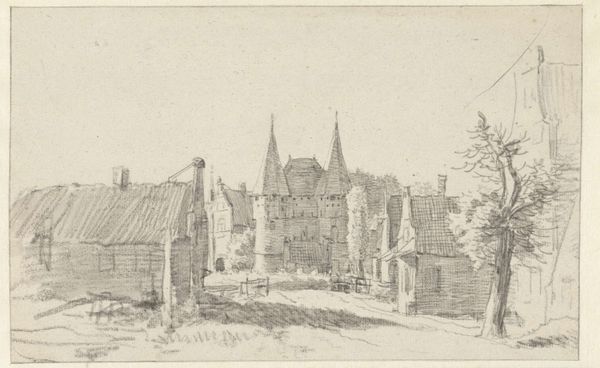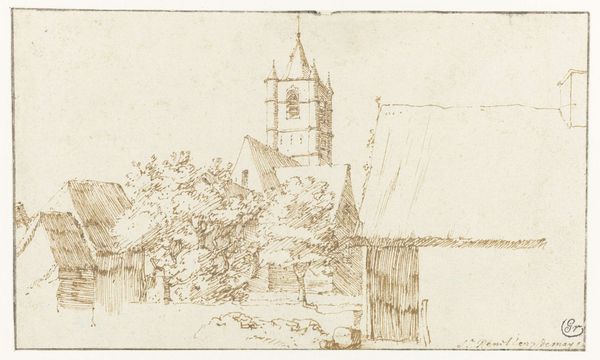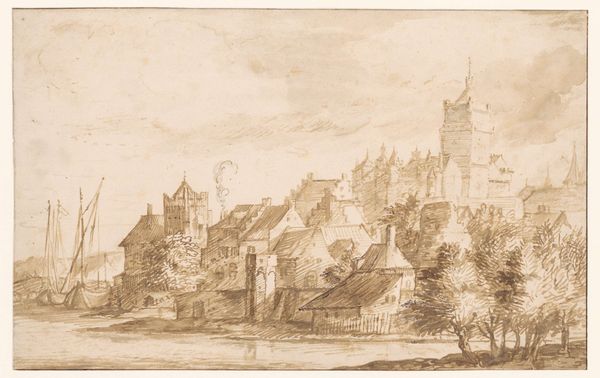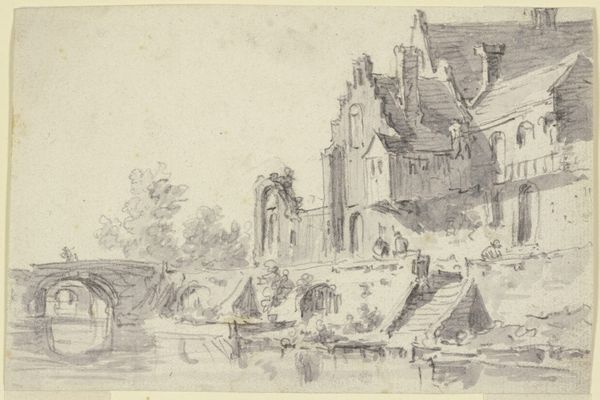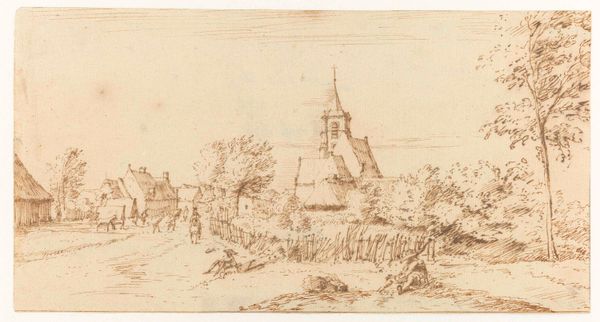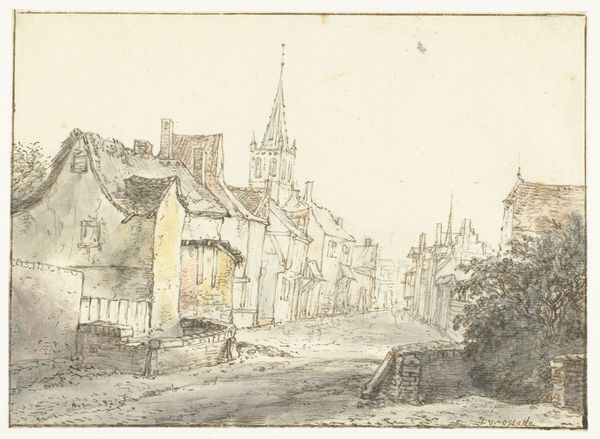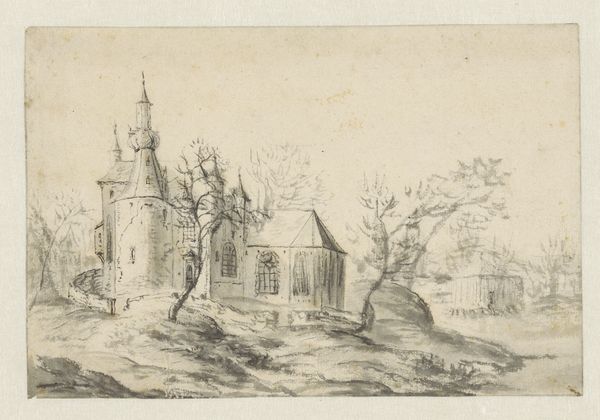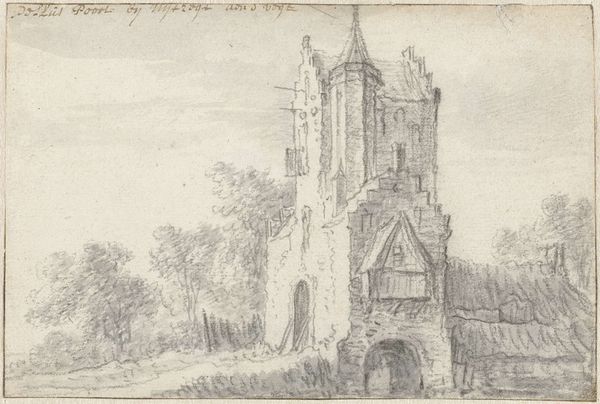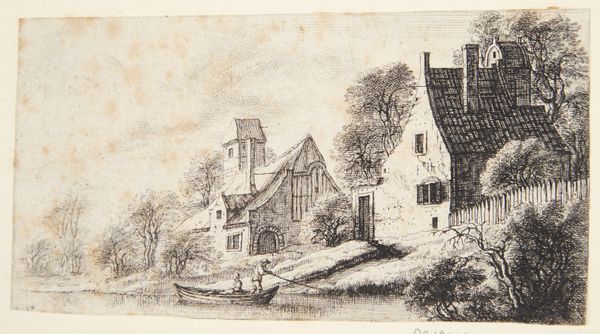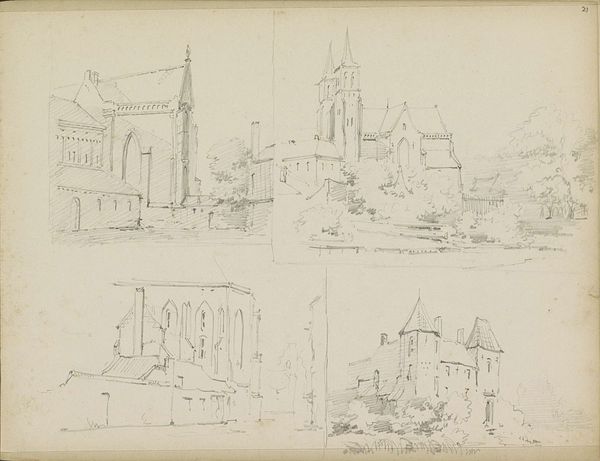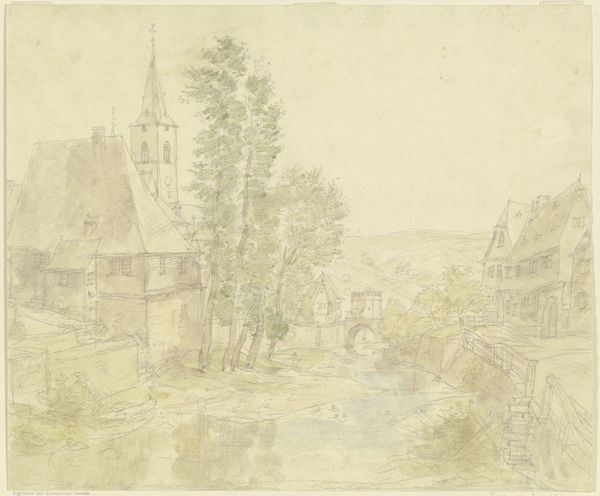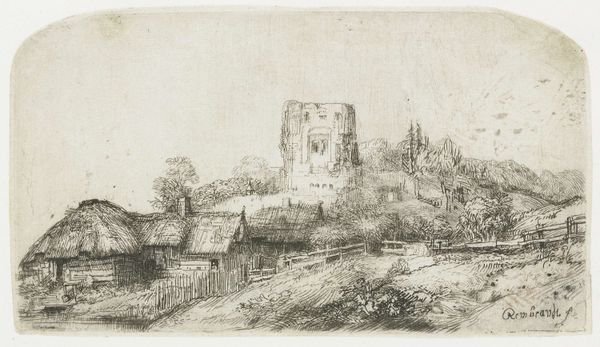
drawing, paper, ink
#
drawing
#
baroque
#
dutch-golden-age
#
landscape
#
paper
#
ink
#
cityscape
Dimensions: height 190 mm, width 217 mm
Copyright: Rijks Museum: Open Domain
Editor: So this is "View of the Church Tower at Rijnsburg" by Isaac van Ostade, dating from the 1630s or 40s. It's an ink drawing on paper. It feels very grounded in the everyday, almost like a snapshot of a regular town. What catches your eye when you look at it? Curator: The directness is compelling, isn’t it? Van Ostade gives us what seems like a simple depiction of a church and surrounding buildings. But consider the social context of the Dutch Golden Age. The Protestant Reformation dramatically reshaped Dutch society. What might this focus on a modest, almost unadorned church tell us about the values being embraced? Editor: So you’re saying it's not just a picture of a church, but a statement about religious identity? Curator: Precisely. And about the shift away from the opulence associated with the Catholic Church. The relative simplicity in the image contrasts with the very intricate landscapes being made during that time. Van Ostade might be signaling a move towards valuing everyday life and local spaces, reflective of the new, less ornamental churches of the era. Does it make you think about the concept of "home?" Editor: It does. The small buildings around the church, almost huddled together, give a sense of community. Was the intent to make sacred space ordinary and ordinary space sacred? Curator: An interesting way to frame it! Perhaps the intention was to blur the boundaries between the secular and the sacred, bringing religious life into closer alignment with daily experience. The landscape becomes a witness to the spiritual and political transformation underway. It reflects a shift in power and perception. Editor: I never would have considered all those layers. I was just thinking, "nice drawing of a church." Curator: And that's the power of art, isn't it? It invites us to look deeper, to ask questions about the world around us and the values we hold. Looking at these drawings as social texts, how could these help understand contemporary landscapes and cultural shifts? Editor: I think this gives me a richer appreciation for how art reflects the politics of its time and how those traces remain embedded even in something as simple as a drawing.
Comments
No comments
Be the first to comment and join the conversation on the ultimate creative platform.
